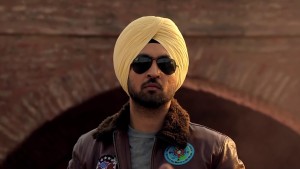The process of inventing or discovering something is not done overnight, it is a long cognitive process which reaches a desired goal after bouts of failure and modifications to get what exactly one wants. I remember when I was in school and was asked to present a science model; it usually was something that I concocted the night before with a few cardboard boxes and batteries, something that would perform a silly, useless task but just looked cool. But the kids here are not me, a last minute magician, they didn’t work just a day to reach their goal, they worked on it for months collectively. What we are about to present to you are science projects that floored even the greatest of scientist, models that stirred the attention of presidents and top R&D firms alike across the globe, their inventions would better humanity on earth and some might just save lives and give people hope. We present to you these geniuses, prodigies that took the world of science by storm. Take a look at the 20 most impressive science models of all time, believe me, you will be fascinated with their research and makes.
1. Plastic Decomposition
The threat of Global warming is increasing rapidly day after day and one of the predominant catalysts to this effect is plastic. Plastic although degradable, does so in a lengthened span of time, basically slower than the rate it is produced. With land-fills already being heaped and oceans contaminated with slow degrading garbage, it is only necessary that the breakdown of plastic is hastened. This is exactly what young budding scientist Daniel Burd looked into. With top-notch scientist across the globe raking their brains as to how to curb and then solve this alarming issue, Burd proposed a theory that just hit the nail on the head. He studied the microbe that helps in the decomposition of plastic, on identifying it he used certain methods to radically increase it, thus helping in a 40% increase in garbage decomposition. His efforts saw him bag the Canada-Wide Science Fair and receive world-wide attention for this breakthrough.
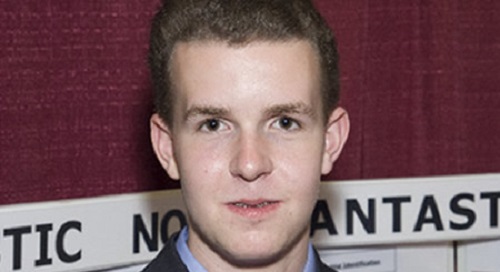
Photo Credit http://super.abril.com.br/blogs/planeta/o-garoto-do-plastico/
2. A Lego Robot That Sniffs Volatile Chemicals
Being in a bomb squad is probably one of the most dangerous jobs to have. One wrong move and you’ll be blown into ashes. In order to counter terrorism and preserve the lives of these valiant undaunted men, Anna Simpson came out with a science model that would and probably will be the face of law enforcement. Made out of Lego, this simplistically designed car goes around sniffing for any volatile chemicals. If there is volatile material present then the color of the porous silicon chip changes to indicate danger, thus potentially saving the lives of many in this life-threatening field.
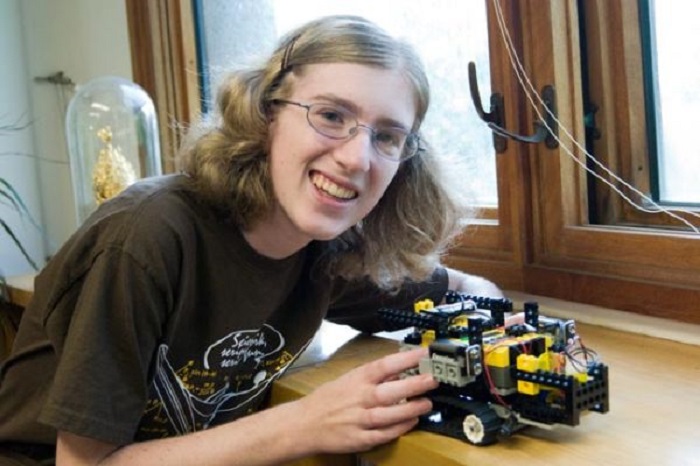
Photo Credit http://news.softpedia.com/news/Student-Designs-LEGO-Based-Chemical-Detecting-Robot-122717.shtml
3. Mind Controlled Prosthetic Limb
This is certainly a dream for those who are physically impaired- to get their limbs responsive to their thoughts. 15- year old Anand Srinivasan inched closer to make this dream a reality with his science project which saw him win in the White House science fair. Anand did immense research in order to get prosthetic limbs to respond to his thoughts- he built his own robotic arm and furthermore mapped the brain with an EEG machine which makes the robotic arm respond to its indications. The project wasn’t flawless but this teenager’s contrivance did help move the wheels of this dream of the impaired a little more.
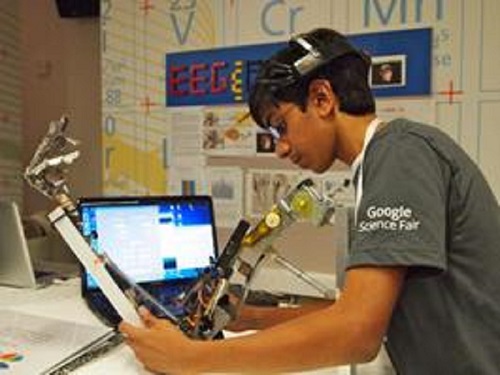
Photo Credit http://www.tedxyouththebeltline.com/speakers-2012—unleash-our-power.html
4. A Nuclear Fusion Reactor
With just three and a half gran, Thiago David Olsen created a marvel in his garage that stumped most scientists. Spending a year researching his project and another year executing it, he built his own nuclear fusion reactor which was done in small scale just to prove that the algorithm needed to make it a success. It could just about heat a cup of coffee and proved radiation free.
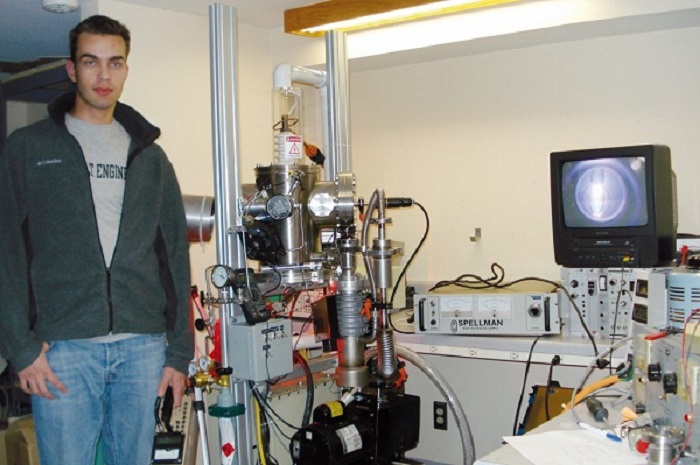
Photo Credit http://www.weirdlyodd.com/the-5-most-amazing-science-fair-projects-you-should-know-about/
5. Image-Based Search Engine
Rather than entering specific keywords to retrieve desired images from search engines, David Liu’s successful science project could change the world of browsing, making it easier and pin-point. He designed what he calls ‘Semantic Image Retrieval and Interactive Exploration of Large Image Collections’ which automatically categorizes images needed and display the result and the specifics of the search. In 2010, for this breakthrough he bagged the runners up trophy at the Intel Science Talent Search competition.
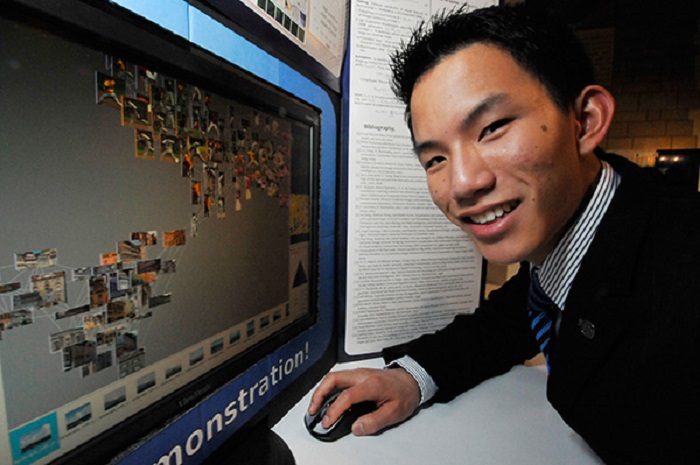
Photo Credit http://www.iwebstreet.com/science-fair-projects/
6. Robots Speaking English
Well if this was already conventional then the robot that recently crushed a man to death at the Volkswagen factory would have been brought to trial. It seems like a long short now for us to verbally communicate with robots but teenager Luke Taylor has probably propelled research in this field with his project. Luke developed a software wherein the robot would capture words of the English vocabulary and translate them into codes that would be understood by the machine to carry out orders of we lazy folk.
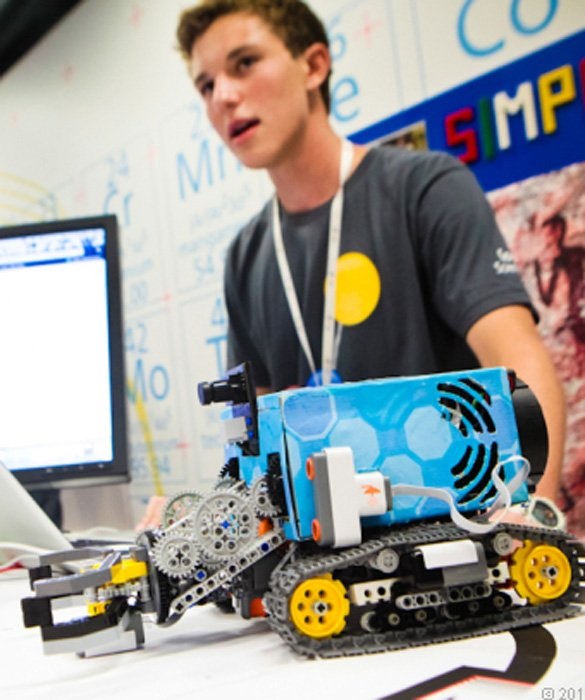
Photo Credit http://mom.me/style/4497-10-amazing-science-projects/item/english-speaking-robots/
7. The Space Balloon
Well most of us are under the impression that one needs high-tech gear to get into space and back or just risk being crushed by the pressure, this small school project headed by a teacher proved us all wrong. Along with four other students, this teacher built a protective rig only to serve the purpose of safeguarding the electronic sensor and a Nikon camera. This was then affixed to a latex balloon and plummeted into the air. They expected the balloon to reach a height of 30,000 feet in the air but it surpassed their expectations by reaching 100,000 feet before deflating at the edge of being completely in space and falling back.
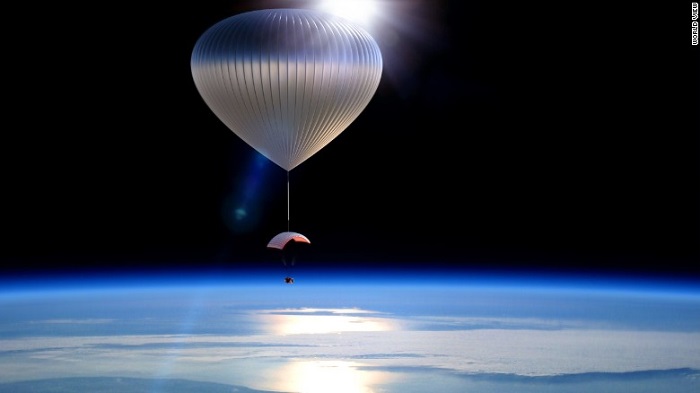
8. The Nuclear Detector
With nuclear power becoming the next big thing and countries flocking to have this aide that would spiral them to be a superpower, it also creates a great threat with regard to the lives of civilians. In order to make matters a little safer and make sure that this human-extinguishing weapon does not fall into the wrong hands, Taylor Wilson built a nuclear detector. Powered by a nuclear fusion reactor which he designed when he was 14-years-old, this now 17-year old’s device can track any object that is contaminated or consists of radioactive material. The device works like any other X-ray machine than scans baggage in an airport and it won’t be too long before we see Wilson’s creation being put into use at shipping ports and airports.
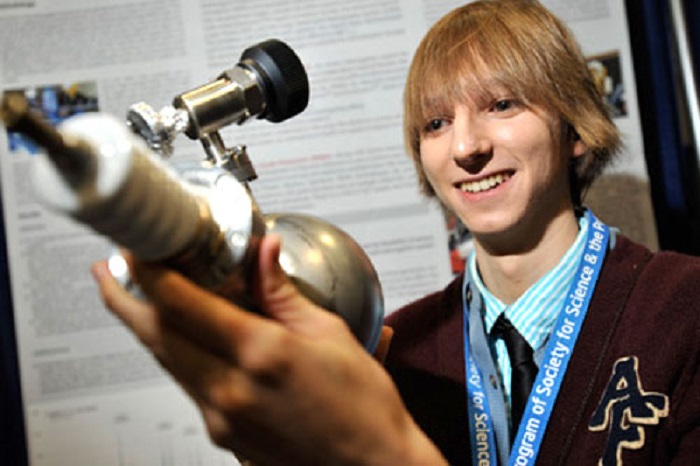
Photo Credit http://thecoolgadgets.com/taylor-wilson-meet-the-inventor-of-radioactive-weapon-detector/
9. Space Craft Navigation
It won’t be too long before we see normal blokes like us drifting into the unknown in space, and when the time comes, which believe me is not too far away, we can thank this 18-year-old Erica DeBenedictis. On studying the patterns caused by the gravitational pull that influences planetary motion, Erica programmed a software to help navigate the safest routes through the solar system. For this phenomenal breakthrough this girl provided, which is now pushed on by NASA, she won the first place and $100,000 at the Intel Science Talent Search.
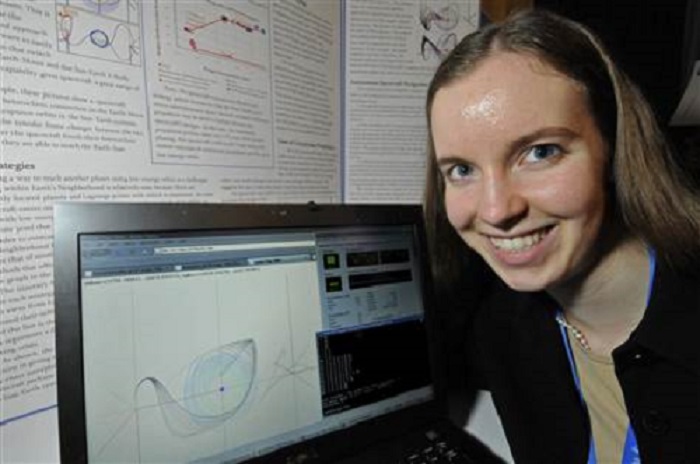
Photo Credit http://www.nbcnews.com/id/35902666/ns/technology_and_science-science/t/teen-wins-spaceflight-software/
10. Energy Saving Device
Yes we all crib that that the earth is getting all warmed up and we are on the brink of a catastrophe, but what do we do about it? Absolutely nothing!! We continue to unnecessarily burn the night lamps and keep our devices running even when not in use. Having said that, let’s take a look at little fellow Ankush’s Gupta project that would probably nullify our lackluster approach towards curbing Global warming. Ankush came up with a device using Domotics- which initiates the use of electronic techniques to reduce the electronic consumption even when we leave all switches on. The concept wasn’t his brain storming idea but it was an improvisation of a similar concept that was brought to light in the 90’s. After careful examination and research, Gupta’s project did result in a 20% reduction in consumption and to better it all, it was controlled through his smartphone.
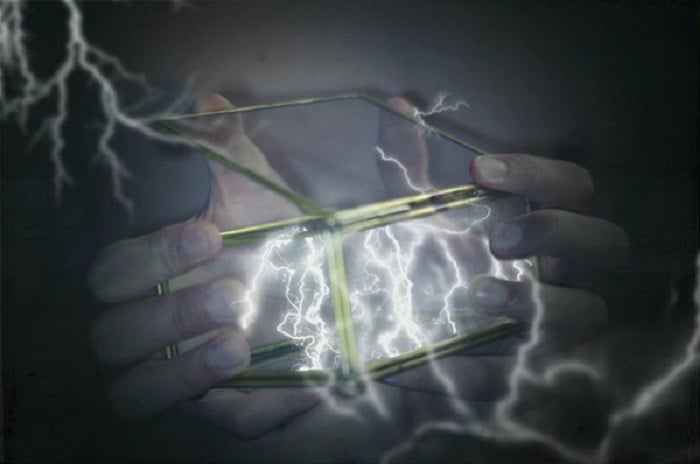
Photo Credit http://www.oddee.com/item_99107.aspx
11. Saving Millions
Governments and institutions look for all ways to save money and have tons of people working in this field but sometimes the simplest of ways money is splurged is looked over. Upon realization that a bottle of printing ink is more expensive that good perfumes, Suvir Mirchandani, a middle-school student found a way to save his school money. He switched the font they used regularly to Garamond and weighed the difference between the two after printing. With some calculation, he estimated that if this was implemented, then the school would save up to $20,000 annually. He then took his find to the U.S federal government and proved to them that a simple change in the font would save them four hundred million dollars a year in printing costs. This elementary yet ingenious idea got him media coverage around the globe in a matter of days.

Photo Credit ttp://www.usamagnum.com/does-changing-fonts-reduce-your-toner-and-printing-costs.php
12. Diesel Hybrid Car
A team of students from the West Philadelphia High School entered the Automotive X contest and in their bid to win $10,000, they developed a diesel hybrid race car than took everybody by surprise as a result of its functioning. The car can reach 0-60 Mph in a matter of four seconds yet consume only a gallon of fuel for 60-Miles. These younglings did not manage to win the competition but they are bettering the car to 100Mpg in a bid to win the competition the next year.
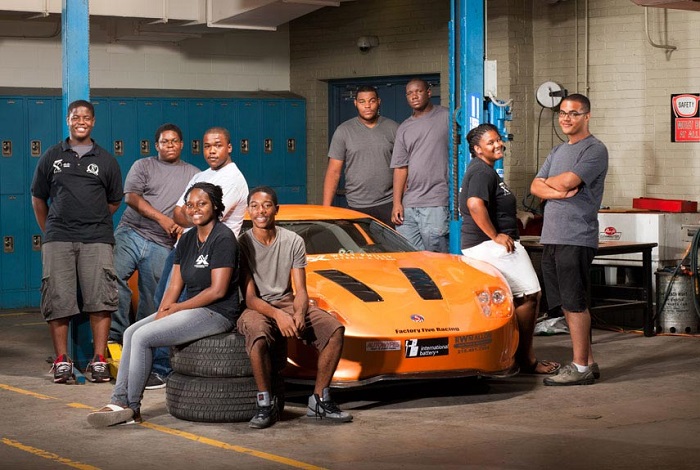
Photo Credit http://www.popularmechanics.com/cars/hybrid-electric/a7262/the-west-philly-students-who-build-supercars/
13. Reducing Pollutants
In order to decrease pollution caused by vehicles and invariably help keep Global Warming in check, Bing Wang constructed a device that would purify the pollutants emitted by vehicles through acid-base neutralization and the remnants of the pollution would be stored and put to better use. Considering the soaring pollution levels in metropolitan cities, it is high time his invention and theory is put into practice on a large scale.

Photo Credit http://www.harvardcgbc.org/people/research-team/
14. Reducing The Risk Of Cancer Through Marinades
In an effort to reduce the risk of carcinogens(agents that cause cancer), this 14-year-old Lauren Hodge spiraled her way to fame by winning the Google Science fair award by proposing the use of marinades while grilling meats or cooking them to halt the formation of carcinogens. Amongst all the tested marinades she said that lemon is the most effective.
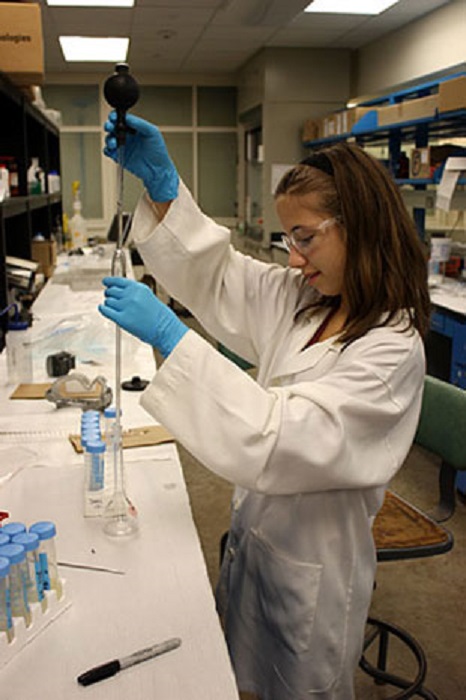
Photo Credithttp://cornellsun.com/blog/2011/11/30/14yearold-conducts-experiment-with-cornell-faculty/
15. Increasing The Speed Of Computers
What is more frustrating than sitting in office on Mondays is having a computer that lags with each task. This could set you off target instantly and could prove a nightmare for techies, and thus we bring in Kevin Ellis. Kevin is the Intel International Science and Engineering fair grand winner and his concept to make computers faster is revolutionary. According to him, “Microprocessors already run to their limit and wanting them to go any faster would result in them melting.” His Idea? To load several microprocessors on one silicon chip thus splitting the work load and gaining efficiency. In order to prove his theory he ran a 3D rendering software and it performed the task 8.5 times faster than it normally would and this bagged him a hefty $50,000 cash award.
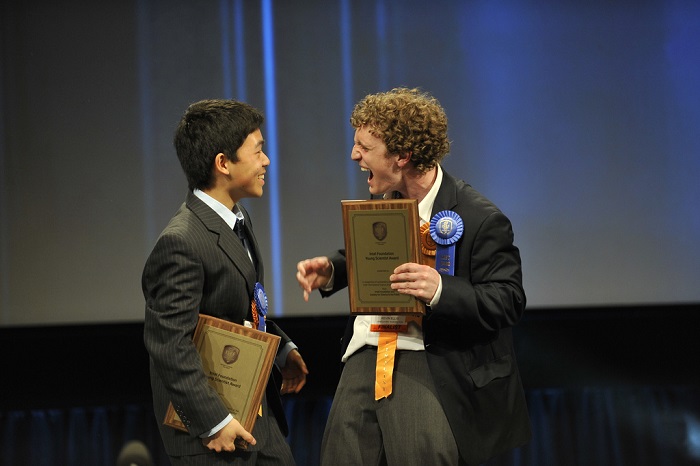
Photo Credit https://www.flickr.com/photos/intelphotos/4607821758
16. Improving Cancer Treatment
Cancer takes the lives of millions around the world every year and while most doctors have no idea as how to approach this deadly disease, this high-schooler has probably paved way to overcoming this disease. She created nano-particles that would be injected into the person suffering from cancer. The particles would flow through the blood stream and the exposure of photodynamic light (used in skin cancer treatment) would act as a catalyst in pin-pointing the tumor and initiating the reaction of the particles with the affected area. The particles consist of a highly reactive form of oxygen that proves deadly to cancer cells. She won the top prize at the Intel Science Fair and was even honored by President Obama at the White House.
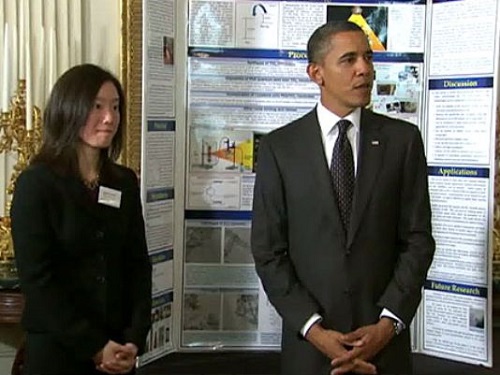
Photo Credit http://www.wfaa.com/story/news/local/2014/08/10/13630768/
17. What’s Wrong With Ovarian Cancer
Shree Bose a 16-year-old probably proved what’s wrong with Ovarian Cancer treatment with her science project that saw her win the Google Science Fair prize. According to Shree, the chief drug used in chemotherapy is Cisplatin, and although the drug does help in killing the cancer cells, patients become resistant to it resulting in the deadly disease returning. Bose discovered that an energy protein called AMPK helped the drug in the later stages to remain effective thus proving a surety of no haunting comeback of the disease.
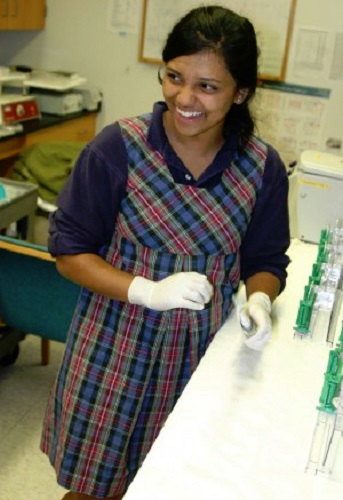
Photo Credit http://www.nwlc.org/title-ix/shree-bose
18. An Affordable Prosthetic Arm
Behind every great man there is a defining story or tale that pushed them to be where they are and the story of this teen is as overwhelming. Easton LaChappelle now aged 19-years, once met a girl who was limbless and had to shell out $8000 for a prosthetic arm. Shocked by its extortionate price tag and the fact that the girl had to deal with her impaired state as she couldn’t afford it, Easton decided to make Prosthetic arms that would be affordable. For just $250 he built a prosthetic arm using his 3D printer and gives buyers the opportunity to even modify their arm as per their wants. Now this is a science project that would change the world.
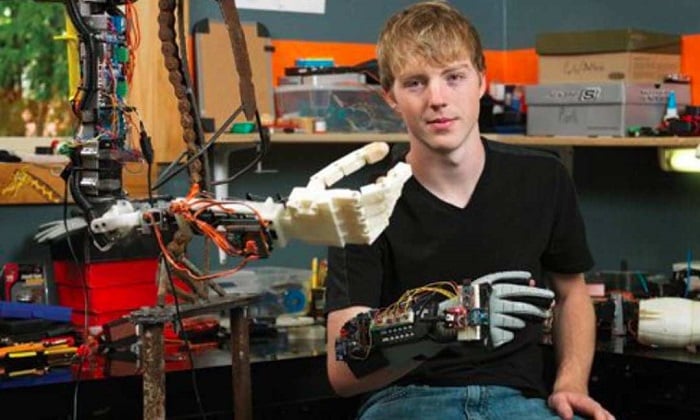
Photo Credit http://soulspottv.com/blog/14-yearold-builds-affordable-3d-printed-robotic-prosthetic-arm/
19. Helping The Deaf Hear
We all know that sound travels faster through solids and with greater quality, little one Jonah Kohn, did one such experiment to find a way to make people hear. In his noisy classroom he bit his guitar and experienced that he then heard it clearer in which the waves travelled through his teeth, skull and then only received by his brain. He used the same concept to help deaf people and created a device that would be placed on their fingers which worked as a tangible sound speaker that sent waves through their bones. The experiment proved 95% increase in sound clarity for some.
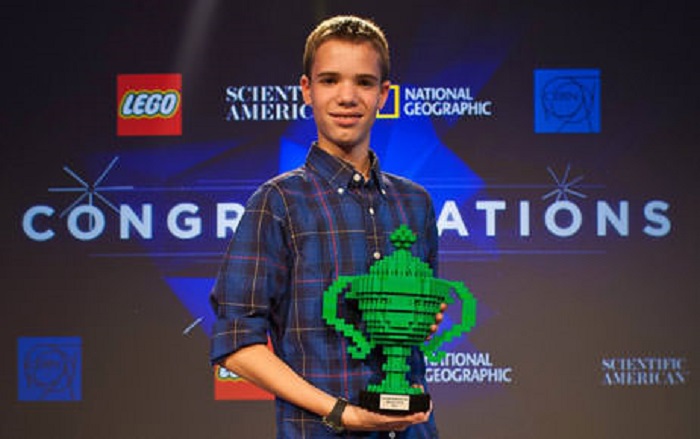
Photo Credit http://www.arbitragemagazine.com/video/music-heard-vibration/
20. Self-Driving Car
Yes Google has already designed this and it surely will be on roads in a few years but Ionut Budisteanu costs only $4000 as compared to the exorbitant price tags Google will put out. Of course the 3D-radars they use is top notch but according to this 19-year-old, lesser quality 3D radars can be used but complimented by cameras to keep watch on the road and the curbs. His project is yet to be full proof but he is already hunted for his idea by manufacturers around the world.
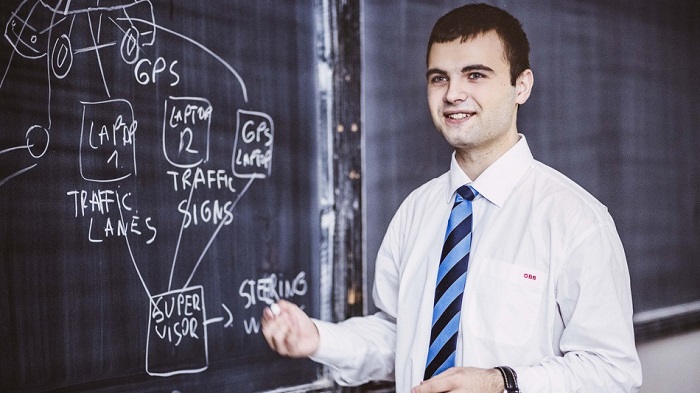
Photo Credit http://mashable.com/2014/04/08/ionut-budisteanu-self-driving-car/


